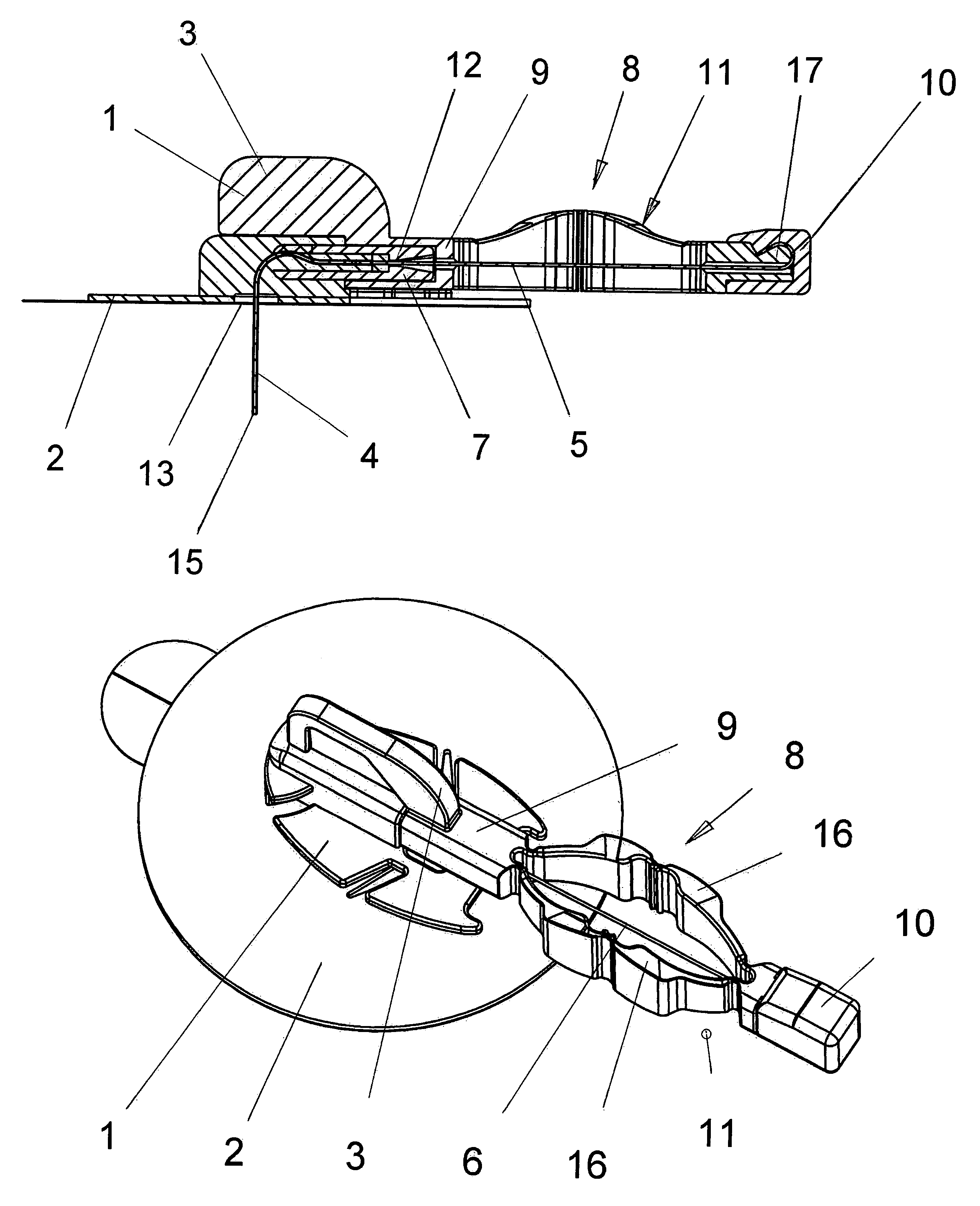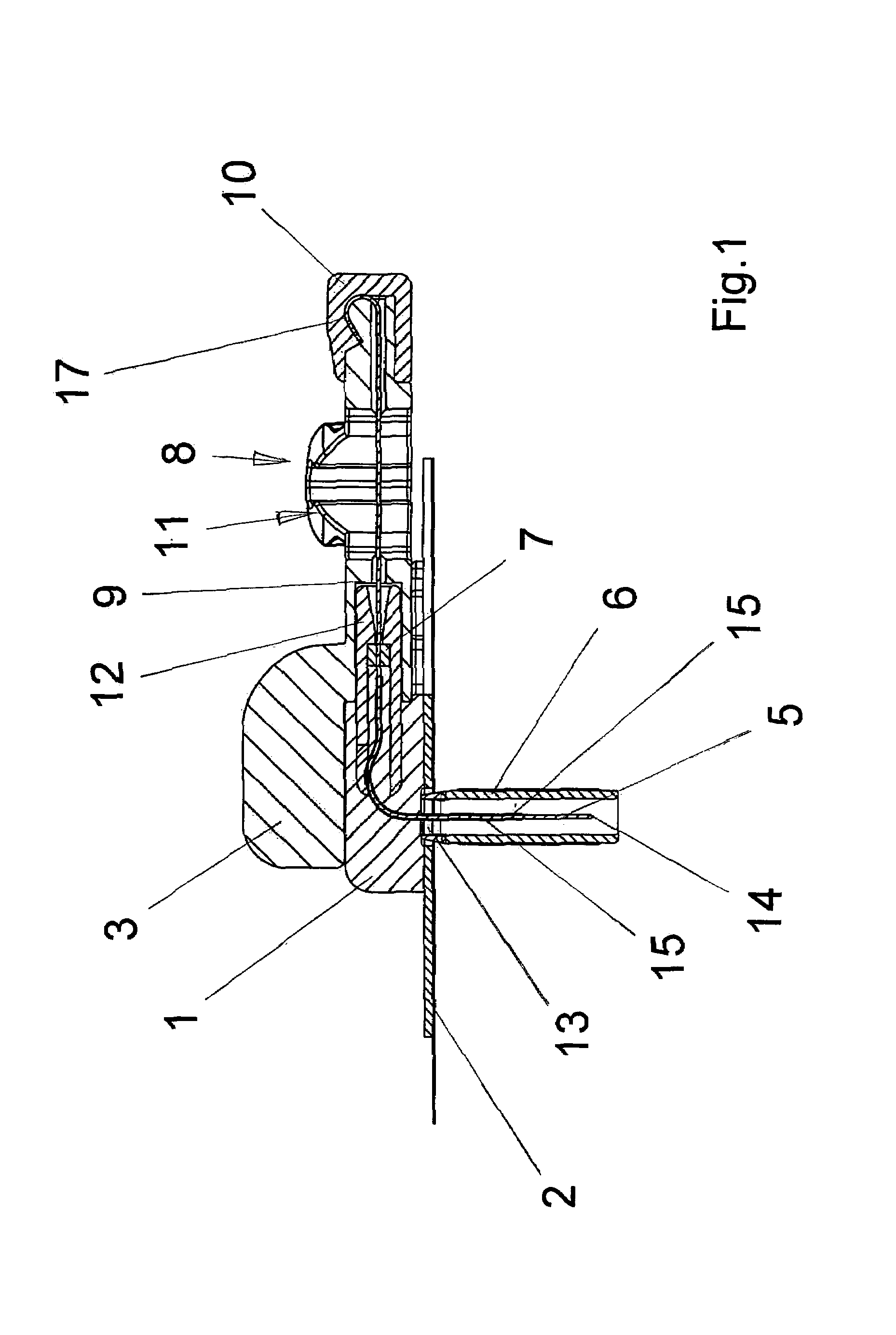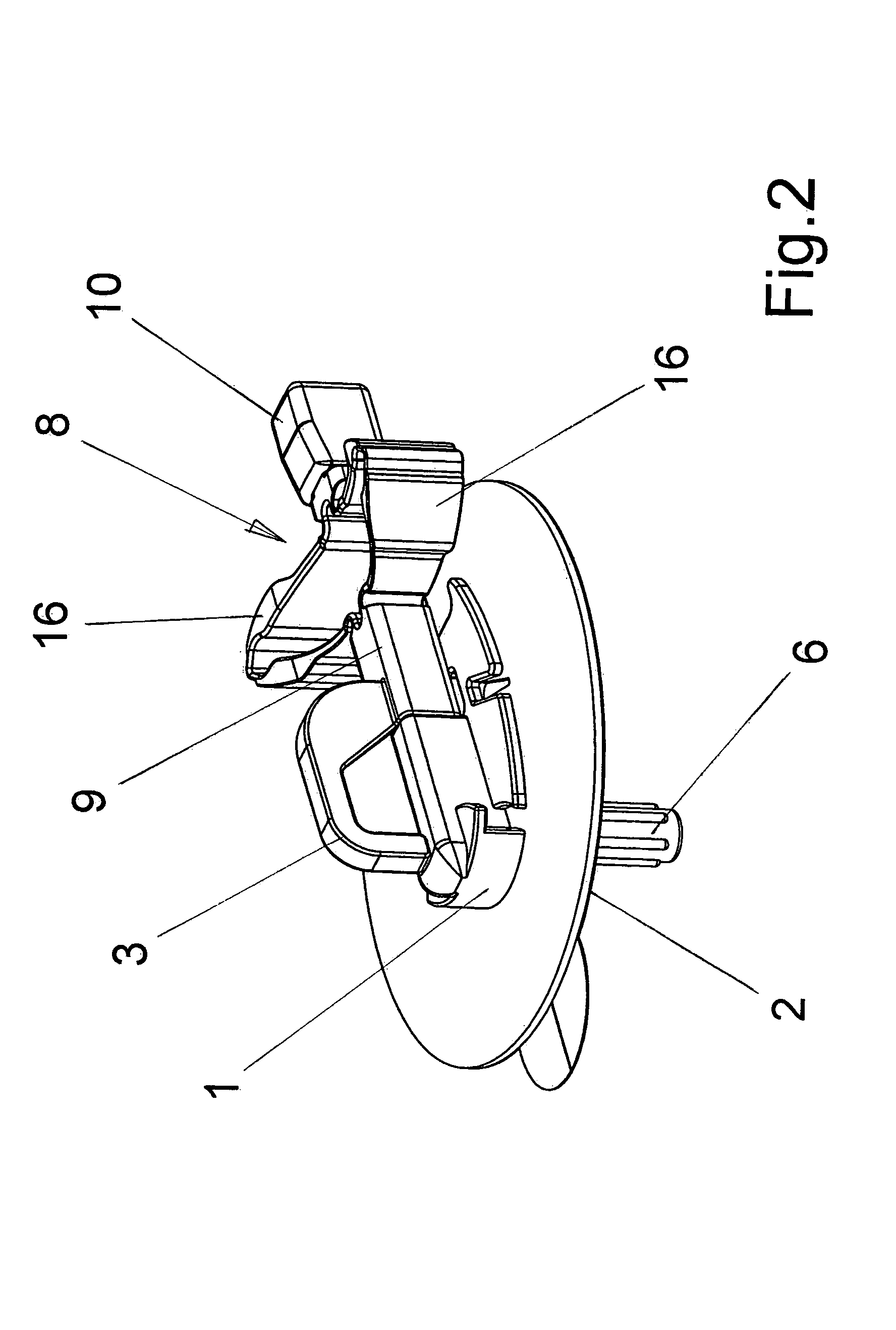Puncture device with a flexible catheter tube for connecting to a medical infusion line
a flexible catheter and infusion line technology, which is applied in the direction of infusion devices, intravenous devices, infusion needles, etc., can solve the problems of adulterating the initial dose of especially small doses, and achieve the effects of convenient patient handling, safe and easy manner, and large diameter
- Summary
- Abstract
- Description
- Claims
- Application Information
AI Technical Summary
Benefits of technology
Problems solved by technology
Method used
Image
Examples
Embodiment Construction
[0037]FIGS. 1 through 5 show a model of a puncture device according to the present invention from different views and in different positions of use. FIGS. 1 and 2 show the puncture device in a starting position prior to a puncture. FIGS. 3 and 4 show the puncture device in a position following the puncture and the withdrawal of the puncture needle from the catheter tube. Finally, FIG. 5 shows the catheter hub after the removal of the needle holder together with the connecting piece of an infusion line ready for connection.
[0038]The puncture device is basically composed of two parts, a catheter hub1 and a needle holder 8. The catheter hub 1 is essentially flat in design. The catheter hub 1 has an adhesive disk 2 with a self-adhesive film fitted on the bottom side thereof which is covered with a protective film in the starting position as shown in FIGS. 1 and 2. The catheter hub 1 also has a connector 12 by means which the catheter hub is connectable to an infusion line. The connector...
PUM
 Login to View More
Login to View More Abstract
Description
Claims
Application Information
 Login to View More
Login to View More - R&D
- Intellectual Property
- Life Sciences
- Materials
- Tech Scout
- Unparalleled Data Quality
- Higher Quality Content
- 60% Fewer Hallucinations
Browse by: Latest US Patents, China's latest patents, Technical Efficacy Thesaurus, Application Domain, Technology Topic, Popular Technical Reports.
© 2025 PatSnap. All rights reserved.Legal|Privacy policy|Modern Slavery Act Transparency Statement|Sitemap|About US| Contact US: help@patsnap.com



